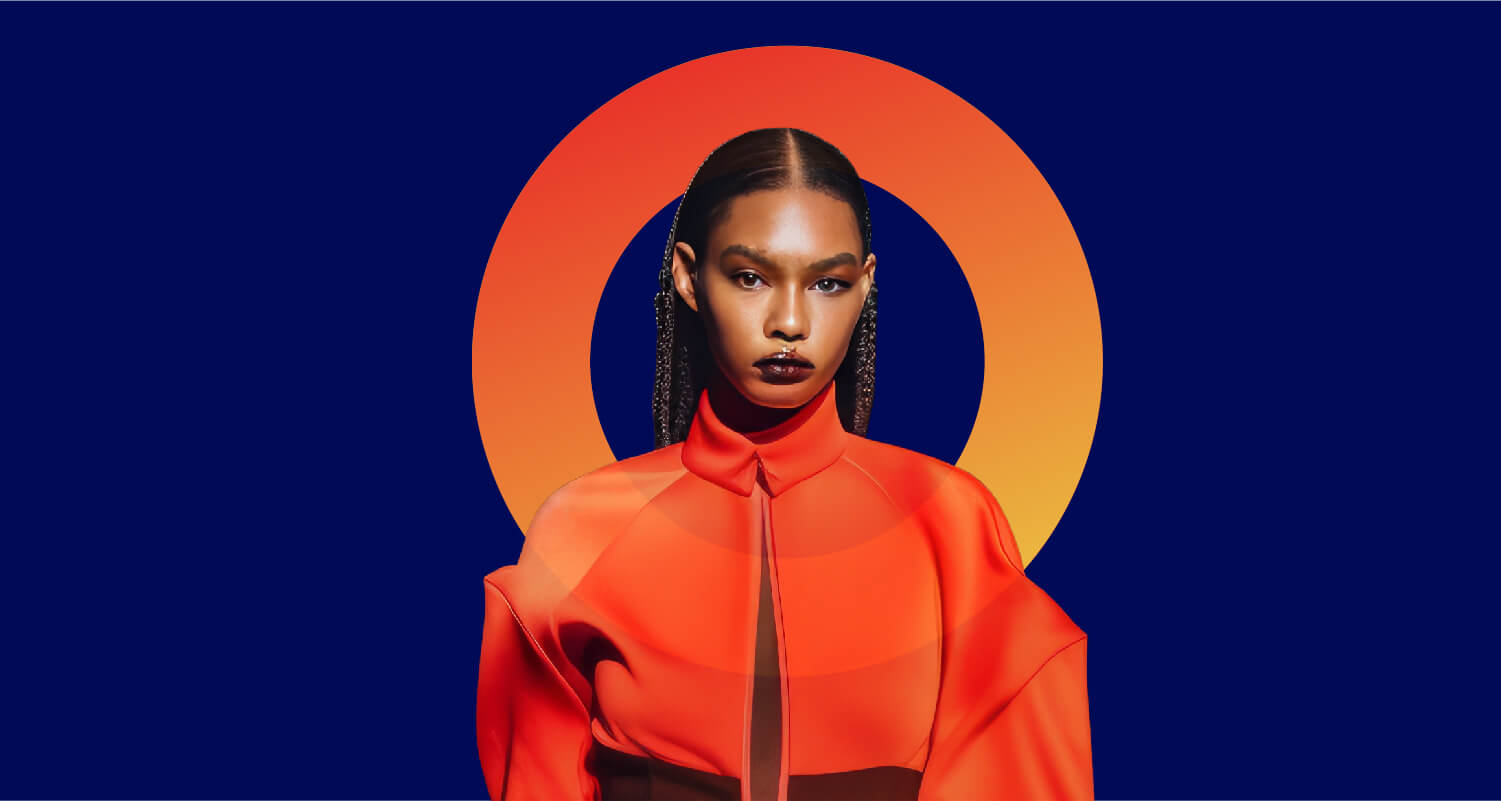IMD business school for management and leadership courses



Future Readiness Indicator
Tariffs, tech, and couture: How Trump, AI, and sustainability are turning the fashion world upside down
The uncertainty about consumer spending is significant. This sentiment reflects global concerns about economic volatility and restrained spending habits across major markets. And yet, financial discipline or operational excellence alone no longer guarantees success. The fashion companies topping this year’s Future Readiness Indicator – Hermès, LVMH, and Zara – are succeeding by becoming deeply culturally relevant.
- Hermès and LVMH take the top spots in the 2024 ranking. Both companies are flourishing by focusing on operational agility and meaningful, deliberate geographic expansion. Unlike brands that have scrambled to go digital-first and grow as fast as possible, Hermès and LVMH have embraced “thoughtful expansion” that puts cultural relevance front and center.
- Nike’s shift away from its core performance-focused identity left consumers confused and partners alienated, resulting in its dramatic fall from first to fourth place.
- Against a backdrop of widespread criticism of the fast fashion industry, Zara surged up to the #3 spot through a deft combination of cultural resonance and digital integration, whereas H&M slipped from #13 to #20.
- Trump’s proposed economic policies, including sweeping tariffs and the elimination of duty-free loopholes, will have major implications for the fashion industry. However, this is already prompting shifts towards resilience and localization.
- Sustainability’s rise as a non-negotiable consumer value is pushing brands to make dramatic changes – from supply chain transparency to materials innovation.
What’s driving success in fashion in 2024
What we see in the fashion-focused Future Readiness Indicator is that luxury brands are tightening their grip at the top, while fast fashion is reinventing itself. Meanwhile, household names like Nike are grappling with the unexpected consequences of losing their focus. Below, we’ll unpack what’s behind these surprising shifts, who’s winning, and why the rules for staying on top are being rewritten in real-time. The ranking considers multiple factors including:
- Financial fundamentals
- Investor’s expectations of future growth
- Employee diversity / ESG
- Brand value
- Early results of innovation
- Business diversity
- Cash & debt
Key strategies for success
- The imperative of cultural relevance: A common thread among the top performers in the fashion industry is their ability to create cultural phenomena and engage local markets meaningfully. Hermès, LVMH, and Zara have successfully leveraged technology to connect with diverse audiences, making them culturally relevant and, consequently, highly competitive. Companies that fail to do so are finding themselves increasingly left behind.
- Balancing innovation and investor expectations: Another key differentiator between the leaders and laggards is the ability to balance innovation with investor expectations. LVMH and Hermès are exemplary in maintaining consistent, long-term innovation without compromising their financial stability. Nike’s experience also underscores the importance of managing the interplay between innovation and established relationships with traditional retail partners.
- Strategic diversification as a survival strategy: Across the fashion industry, diversification – both in product lines and in geographic markets – is increasingly becoming a survival strategy. The top performers have minimized risks by expanding their reach beyond a single market and by diversifying their offerings. The most successful companies have effectively diversified across multiple dimensions, including distribution channels, price points, and consumer segments while maintaining brand coherence and operational efficiency.
- AI and technology integration: Generative AI is revolutionizing design processes and personalization across the fashion industry. From virtual try-ons to augmented reality shopping experiences, the integration of AI is enhancing the consumer experience and driving personalization. Brands leveraging AI and immersive technology are better positioned to cater to the digitally savvy consumers of today and tomorrow.
- Sustainability revolution: The fashion industry’s sustainability movement is no longer a niche effort but a core component of strategic planning for many brands. The rise of the circular fashion economy, which emphasizes recycling, reusing, and reducing waste, is gaining significant momentum. Those brands that align with these values are resonating more strongly with a growing segment of environmentally conscious consumers.
- Consumer behavior shifts and shopping patterns: Consumer preferences are also shifting significantly. Multifunctional clothing – pieces that can adapt to different uses or occasions – is gaining popularity, where versatility is highly valued. Digital shopping channels are also becoming increasingly important, with more consumers preferring to shop online or through digital mediums, driving brands to enhance their e-commerce capabilities and digital experiences.
- Business model evolution: Strategic changes: Companies are placing a greater emphasis on supply chain transparency, driven by both consumer demand for ethical sourcing and regulatory pressures. The integration of online and offline retail experiences is becoming a key differentiator, with brands focusing on creating seamless omnichannel experiences. Additionally, data-driven decision-making is becoming central to strategic planning, enabling companies to better understand and anticipate consumer needs and adjust accordingly.
Luxury surges ahead: How Hermès and LVMH are winning by playing slow to move fast
As China’s GDP growth slows to a projected 4.5% in 2025, domestic brands are gaining ground. The concept of “luxury shaming,” fueled by government messaging against wealth flaunting, is particularly affecting high-end luxury goods.
It’s in this context that Hermès and LVMH have pulled off what many may have considered improbable: not just growing but flourishing by playing an entirely different game than their peers. Hermès soared to the very top, claiming a perfect score of 100 on the Fashion Readiness Index, while LVMH followed closely behind at 97.5. These are brands that focus on operational agility and meaningful, deliberate geographic expansion that’s taken them beyond an over-reliance on the Chinese market.
Their success is a paradox in itself: while many brands scrambled to go digital-first and grow as fast as possible, Hermès and LVMH embraced what can be best described as “thoughtful expansion.” Hermès’ careful diversification and LVMH’s best-in-class brand portfolio have set a gold standard by playing a longer, more thoughtful game that puts cultural relevance front and center.
Nike’s missteps: What happens when you forget who you are
Nike’s stumble from #1 to #4 is nothing short of shocking for a brand that once epitomized future readiness and innovation. But this shift carries a powerful lesson: losing focus can be more dangerous than the fiercest competition. Nike’s bid to balance direct-to-consumer sales while appeasing its traditional retail partners created tensions that damaged relationships across the board. At the same time, a shift away from its core performance-focused identity left consumers confused and partners alienated.
The irony is inescapable: in an attempt to reinvent itself, Nike moved away from what made it great. Sportswear challengers like Hoka (owned by Deckers) and Salomon (owned by Amer Sports) are outperforming incumbents such as Nike and Adidas in growth. Despite this setback, Nike remains a global giant with a vast retail footprint – meaning that if it can rediscover its focus on innovation and reclaim its core identity, Nike could very well rise again.
Zara’s quiet comeback: Fast fashion isn’t dead, it’s just changing faster than ever
Think fast fashion is dead? Think again. While over half of UK consumers claim to avoid fast fashion, 50% also report purchasing from fast-fashion brands, demonstrating a gap between consumer values and actions. Zara’s return to relevance is one of 2024’s most unexpected success stories. Against a backdrop of widespread criticism of the fast fashion industry and competitors like H&M slipping from #13 to #20, Zara surged up to the #3 spot. Their strategy? A deft combination of cultural resonance and digital integration. Zara has transformed itself by staying incredibly close to shifting consumer preferences, embracing a swift production cycle, and blending digital fluency with physical store strengths.
What’s particularly surprising here is that, while many wrote off fast fashion as a relic of the past, Zara adapted the model to modern expectations – a testament to how even the most challenged segments of the industry can reinvent themselves through adaptability and innovation.
Tariffs, tech, and sustainability: The real disruptors are not what you think
The global fashion industry entering 2025 will not merely evolve; it will confront a fractured, culturally driven world. Trump’s proposed economic policies add another layer of complexity. Aggressive tariffs targeting imports are likely to come into play, this, along with the elimination of duty-free import loopholes, will reshape the entire fashion supply chain. Proposed tariffs of 10-20% on all imports, along with up to 60% tariffs on Chinese goods, threaten to disrupt established manufacturing hubs, forcing brands to rethink sourcing strategies and price points.
The National Retail Federation estimates that proposed tariff policies could reduce American consumer spending power by $50bn annually – an impact that would reverberate across all tiers of fashion, from luxury to fast fashion. Nike’s reliance on Asian manufacturing and Zara’s nimble supply chains may be vulnerable. India’s manufacturing footprint is poised to expand. All this entails a strategic shift toward resilience, localization, and more sustainable practices with a geopolitical alignment to minimize disruption risks.
Sustainability’s rise as a non-negotiable consumer value is also pushing brands to make dramatic changes – from supply chain transparency to materials innovation. It’s no longer an option to treat sustainability as a nice add-on; it’s central to brand identity and a major factor in driving consumer loyalty.
What’s perhaps most counterintuitive in this analysis is that financial discipline or operational excellence alone no longer guarantees success. Companies like Hermès, LVMH, and Zara have succeeded by doing something fundamentally different – they have become deeply culturally relevant. They’ve leveraged technology, local partnerships, and social media not just to promote products but to build genuine cultural movements that resonate locally and globally.
The takeaway: Adapt, innovate, stay ahead – or fade away
The fashion industry going into 2025 isn’t just about operational excellence or the ability to make bold moves. The future of fashion is as much about people and culture as it is about product – those who forget this do so at their peril.










